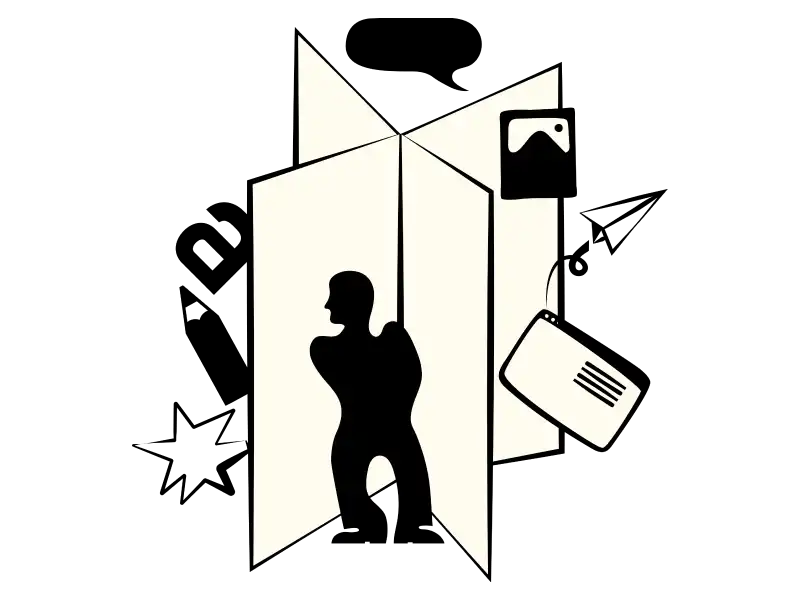Why Brands Need More Stories, Less Content
Part I of Story Design 101 a three-part series on brand building through Story Design, a disciplined approach to creating brand stories that connect, motivate, and stick.
Never have brands struggled so much to be heard or understood. It feels like log rolling on the edge of Niagara Falls. You need a strong core to balance your message on a 2” X 5” screen that is violently scrolling!
Why all this turbulence, anyway? The consensus seems to be that people no longer have attention spans. We’re all frantic, distracted, and out of control. So how do we explain bingeing on the latest Netflix hit – focused for hours on a single series?
The truth is, we are all on the hunt for stories. Always. We do it unconsciously. It’s how we make sense of the world, understand complex ideas, get away from the day-to-day grind, and even fall in love. Without stories, life would be chaos – impossible.
Content, Content Everywhere, Rarely a Story to Be Found
A couple of decades ago, marketers started talking about using stories as the central vehicle for brand building. Mostly, it hasn’t worked. Why? Because brands have lost the thread and become the engines of content – tons and tons of content – that no one cares about.
Brands are expected to spend more than $24 billion to promote video content on social channels in 2022. At the same time, influencers are making a killing by telling their personal stories. Which begs the question: why don’t brands become influencers, rather than hiring them?
Some Key Facts About Story
Did you know that when your brain sees or hears a story, its neurons fire in the same pattern as the brains of those who are telling it? It is called neural coupling.
Did you know that good stories engage the listener emotionally, creating empathy? Psychologists call it narrative transport.
And did you know that you are 20 times more likely to remember a story than a fact presented on its own? FMRI (functional magnetic resonance imaging) studies show that stories light up additional areas of the brain as if the action was literally happening to the listener.
Powerful stuff.
Volume Isn’t a Path to Being Heard
If stories are so powerful and brands want to use them to connect with their audiences, what do they do? How do they turn their volumes of content into something that performs – in short, into stories?
First, stories are ideas in action. Stringing a series of thoughts, events, or commentary together is not a story. Competitive claims, product/solution promises, or even philanthropic giving are not stories – at least not on their own.
What Makes a Story a Story?
Stories have a unique structure: setup (context), inciting incident that moves the story forward (hook, dilemma, challenge), point of no return (how is this going to resolve?), climax (the main event), and denouement (where we process what we just heard).
Stories do not have to be linear or even use words, but they must have an action – something that grabs our attention, and we can care about. We need to go on a journey – however small – until there is a resolution.
Stories can and do work in a business context. So, let’s take a closer look at how you and your brand can get there.
Up Next
In Part II, we look at the elements of Story Design and how they can be applied to brand building. Enter your email below to get notified about when the next blog post is published.
Pilot is a Story Design company, applying the rigours of behavioural science and design craft to take brands to new heights.


